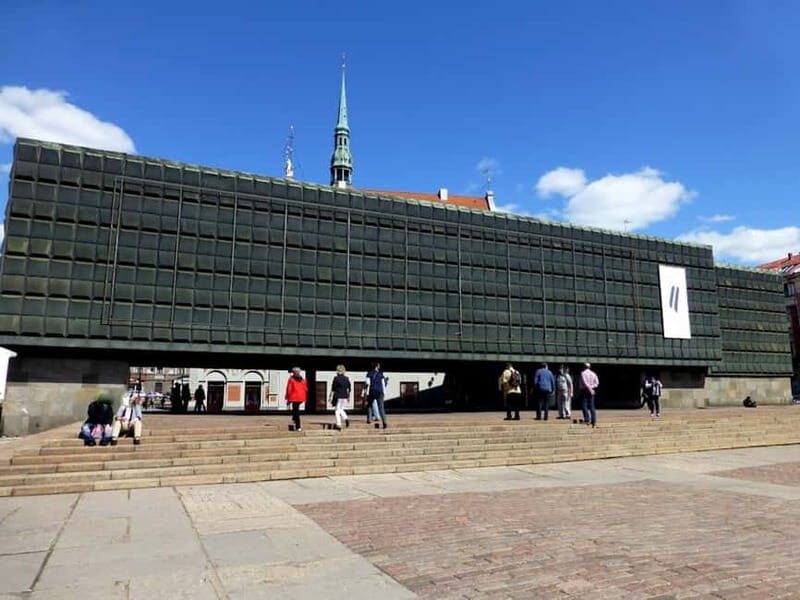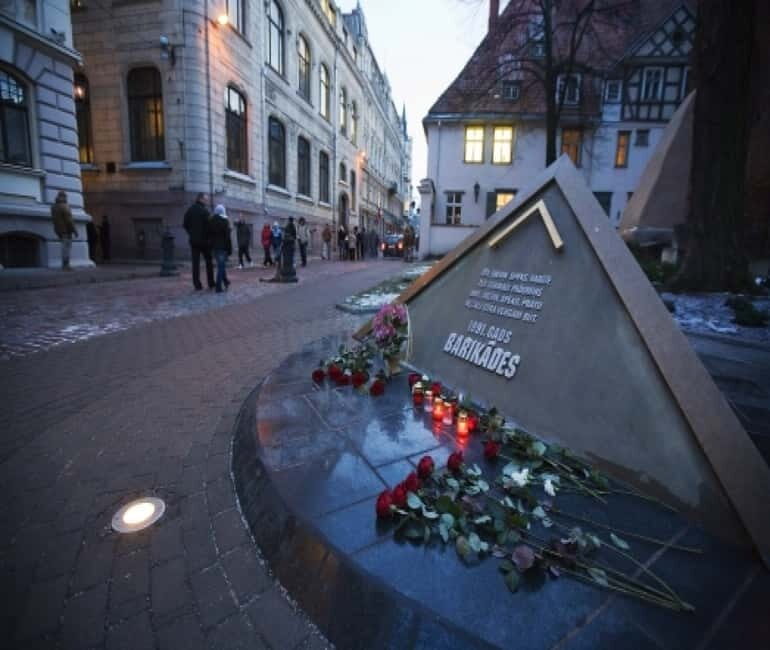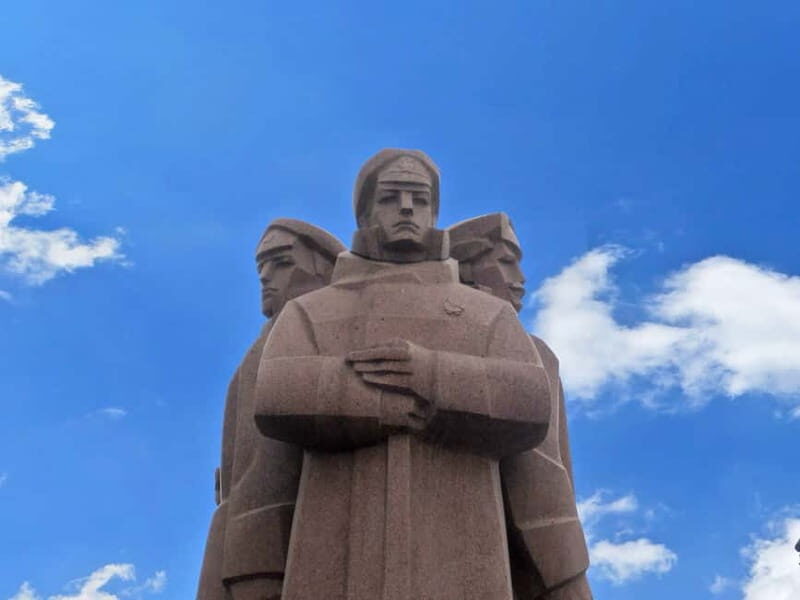Exploring Riga’s Soviet past can be a revealing journey, and this guided walking tour makes it both accessible and deeply personal. For just a couple of hours, you’re led through the city’s Soviet-era landmarks, including the Museum of the Occupation, Monument of the Latvian Rifleman, and the Deportation Memorial. The tour is offered by Guide agency Smile Line and generally costs around a reasonable price, with options to reserve now and pay later—perfect for flexible travel planning.
What we love most about this experience is how it blends architecture with personal stories. The guides, such as Gunta, share their own memories and private anecdotes, making history feel immediate and real. We also appreciate how the tour is designed to bring history to life without overwhelming you with facts. It’s a great way to understand how Soviet influence shaped the city’s physical and cultural landscape.
A potential consideration is the walking nature of the tour—comfortable shoes and a readiness to traverse some city streets are a must. Also, since the tour ends at the same meeting point, it’s best suited for those who prefer a straightforward, coherent experience rather than a series of separate visits. This experience is especially valuable for travelers interested in authentic stories and visual contrasts between Soviet and Art Nouveau architecture. It’s ideal for history buffs, culturally curious visitors, and anyone who wants a genuine, immersive look into Riga’s past.
This experience made our article of Riga’s 16 Best Walking Tours: Which To Choose?.
Key Points

- Authentic storytelling from guides who share personal Soviet-era memories
- Landmark visits like the Museum of Occupation and Latvian Rifleman monument
- Focus on architecture and symbols of the Soviet period versus modern Latvia
- Accessible and flexible booking options with cancellation up to 24 hours in advance
- Small group size (3-20 participants) for a more intimate experience
- Ideal for history enthusiasts interested in authentic, local perspectives
A Close Look at the Tour Experience
If you’re longing to understand how Riga’s past still echoes today, this tour provides an honest window into the city’s Soviet history. Starting point is conveniently located inside Rtslaukums, behind the Blackheads Museum, marked by a bike with a blue box and a yellow umbrella—easy to spot and ideal for first-time visitors navigating the city. The tour lasts about 2 hours, making it a manageable segment of your day, and is led by guides fluent in English and German—a plus for international travelers.
If you're drawn to exploring Riga on foot, we've looked into these other walking experiences
The Landmarks and Their Stories
The Museum of the Occupation is a central stop, where you can see exhibits that reveal the restrictions, fears, and resilience of Latvians under Soviet rule. Many reviews emphasize the personal touch guides bring—one traveler noted, “Gunta told us much history and learned more through personal experience,” which makes the visit resonate more than dry museum exhibits alone.
Next, you’ll visit the Monument of the Latvian Rifleman, a striking symbol of Latvian resistance and national identity. This site not only offers a visual break with its imposing stature but also invites reflection on Latvia’s fight for independence, especially considering how the Soviet period challenged Latvian independence.
The Deportation Memorial is another poignant stop—highlighting the sorrowful chapters of Latvia’s history, with stories of forced exile and suffering. Visitors often mention how hearing personal stories from guides like Gunta “really brought history to life”, making these emotional sites feel incredibly real.
Architecture and Symbols
The tour also explores the architecture that defines Soviet Riga, including the Academy of Sciences building, and contrasts it with the restored Cathedral of the Nativity of Christ, which once housed a planetarium before the Soviet era. These structures tell a story of imposed Soviet modernism, juxtaposed against the surviving Art Nouveau facades for which Riga is famous. The visual contrast helps you understand how history left its mark not only on stories but also on the city’s skyline.
Personal Stories and Guides
The guides, like Gunta, don’t just recite facts—they share personal memories and private stories of living under the Communist regime. This approach turns what could be a dry history lesson into an engaging, human experience. Reviews consistently praise guides for their excellent storytelling, with one traveler remarking, “Hearing her personal experiences really brought it to life.”
More Great Tours NearbyPractical Considerations
While the tour is walking, it’s suitable for most physically capable travelers, and comfortable footwear is recommended. The group size, typically between 3 and 20, ensures a more personal experience and allows for questions and interaction. Tickets are flexible—you can cancel up to 24 hours in advance for a full refund, making it easier to adapt your plans if needed.
Appreciate having local insight? Here are other guided experiences in Riga we've examined
- Pub Crawl- Your best night out in Riga with our local guide!
- Medieval Experience: Guided Sightseeing and Food Tasting
- Bike Tour in Riga with Professional Guide
- Riga walking guided Sightseeing tour
- Riga: Evening or Sunset Boat Tour with Drink and Audio Guide
- Riga’s Architecture: A self-guided audio tour of the city’s art nouveau history
Who Will Love This Tour?
This experience is ideal for history lovers, particularly those interested in Soviet influence, architecture, and personal narratives. It’s also perfect for travelers who want an authentic, local perspective rather than a cookie-cutter city tour. If you enjoy stories that go beyond dates and facts, and you’re curious about how history shaped modern Riga, this tour is a thoughtful choice.
The Sum Up

This guided walking tour offers a balanced mix of visual discovery, personal storytelling, and historical insight. It’s especially suited for those who want to connect emotionally with the history of Riga, understanding the city’s Soviet era through the eyes of locals and the architecture that still defines the city’s skyline. The small-group format and flexible booking make it a practical and enriching option for a two-hour window in your itinerary.
Whether you’re a history buff, an architecture enthusiast, or simply curious about Latvia’s complex past, this tour provides a thoughtful, authentic experience that’s both educational and emotionally compelling. It’s a great way to see a side of Riga that many travelers overlook, and the genuine stories shared by guides like Gunta make it memorable long after your visit.
FAQ

How long does the tour last?
The tour runs for approximately 2 hours, providing a compact yet meaningful overview of Soviet Riga’s history and architecture.
Where does the tour start?
It starts inside Rtslaukums, behind the Blackheads Museum, marked by a bike with a blue box and a yellow umbrella. The guide will be there to meet you.
What is included in the price?
The tour includes a guided walk, a local tour guide (who shares personal stories), and a tour guide system if there are more than 12 participants. It’s designed for groups of 3 to 20 people.
Are there any physical requirements?
As it’s a walking tour, comfortable shoes are recommended. It involves some city strolling, so be prepared for a bit of walking, but it’s accessible for most travelers in reasonable health.
Can I cancel my booking?
Yes, you can cancel up to 24 hours in advance for a full refund, offering flexibility if your plans change unexpectedly.
Is the tour suitable for children?
Yes, reviews mention that it’s good for kids too, especially those interested in history and storytelling, making it a family-friendly option.
This tour offers a meaningful glimpse into Riga’s Soviet years, combining visual landmarks with personal anecdotes that transform history into compelling stories. It’s an experience that will appeal most to those eager to see the city’s contrasts—its elegant Art Nouveau facades alongside stark Soviet architecture—and learn about the resilience of its people. If you’re looking for an honest, engaging, and respectful way to understand Riga’s recent past, this tour is well worth your time.
You can check availability for your dates here:More Walking Tours in Riga
More Tours in Riga
More Tour Reviews in Riga
More Riga experiences we've covered
- Riga’s 16 Best Walking Tours: Which To Choose?
- Riga’s 10 Best Workshops & Classes (With Prices & Reviews)
- 7 Best Wine Tours In Riga (With Reviews & Prices)
- 16 Most Highly Rated Tours In Riga
- The 10 Best Shopping & Market Tours In Riga
- 14 Must-Try Private Driver Services In Riga
- 6 Fantastic Photography Experiences In Riga
- 16 Fantastic National Park Tours In Riga
- The Top 9 Historical Tours In Riga
- 11 Fantastic Hiking And Trekking Tours In Riga
- 14 Of The Best Full-Day Tours In Riga
- Our Picks For The 7 Best Food Tours In Riga
